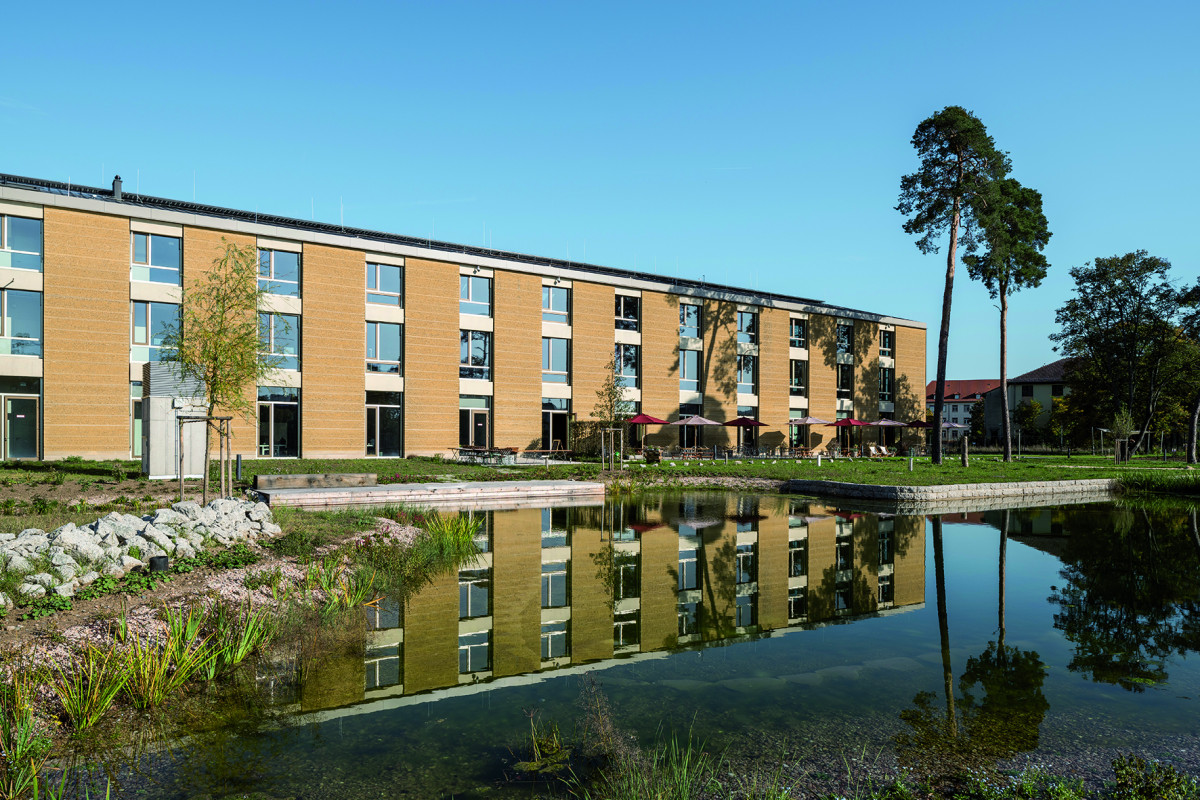Social and cultural aspects are also key for true building sustainability – association
The German Sustainable Building Council (DGNB) is Europe's largest network for sustainable building and issues globally recognised sustainability certifications for buildings, interiors and districts.
Clean Energy Wire: What are the main climate problems the buildings sector has to tackle?

Johannes Kreißig: We have an ambition and speed problem in the building sector. In Germany and a big part of Europe, the vast majority of buildings that will be there in 2050 – when the bloc aims to become climate neutral – already exist today. Therefore, we have to deal with the existing stock, which isn't good enough to achieve the target of climate neutrality. We need a vast number of renovations, on almost every building. We need to become better in the things we are doing, and faster in how we do things to ensure we don't senselessly blow out our remaining, small CO2 budget.
How can sustainability certifications help and why are they important?
The aim of climate neutrality is widely accepted, but it will not be reached by itself. Therefore, we need instruments. Certifications are an instrument to speed things up and to operationalise them, they make sustainability measurable and quantifiable. If it can be measured, it can be managed: I can plan and optimise on that basis and, most importantly, I can commission it and include it in contracts. A builder can therefore order sustainability and it’s clear what will be delivered and how it will be measured – and it can subsequently be tested. When it comes to sustainable finance, for example, as part of loan criteria, a creditor can check and confirm that the investment is indeed sustainable. This is the great value that lies behind sustainability certificates.
Not everything needs to be certified, of course. If you have a building owner who sets sustainability as their aim and can subsequently verify it, then the money is best spent on additional quality on the premises. But in many cases, certifications are necessary because of how divided labour is in a construction project.
If we want to make sustainable construction the new normal, then it has to be affordable for the general public.
What criteria should sustainable construction and buildings fulfil?
There are a couple of fundamental principles. In addition to the environmental requirements – such as climate protection, no harmful materials, minimised water and resource use – you should consider the socio-cultural and the economic criteria too. This might sound weird, but if we want to make sustainable construction the new normal, then it has to be affordable for the general public. If it's something only a few can afford, then we won't reach our climate targets. The socio-cultural dimension is important too, because buildings and districts need to be accepted by society – they need to be context-appropriate and meet the needs of their specific location – otherwise they won't last long.
How does a building's resilience against the unavoidable effects of climate change come into play there?
We have to deal with a changing climate, that's a fact, so performing a climate risk analysis is always part of a DGNB sustainability certification. Reducing economic risks in the long term is extremely important for sustainability, but from the socio-cultural perspective, appropriate comfort plays a big role too. Homes that can't withstand heat or are damaged in floods won't perform well. The ultimate goal of a sustainable building is to ensure it is future proof.
How can more buildings fulfil these sustainability criteria?
Buildings have to be attended to at different points in time. After the intensive process of erecting a new building and finding tenants, nothing really happens for some decades until the investment is amortised. But at some point, rental agreements end or renovation, retrofitting or remodelling is required. It is exactly at this point in time – when work in the building is required – that the sustainability criteria should come back into focus: ensuring that if you're installing a new roof, insulation and PV is added in parallel.
Still, this is what makes progress in the sector quite slow too. Therefore, we need to train more people and make them experts, so that everyone involved in construction brings sustainability into their daily work today already. We are seeing growing demand for this kind of upskilling now.
Technically and financially, we are in a position to reach our emission reduction targets.
Demand for sustainable certifications has also grown in the past few years. What do you think is driving this trend?
The markets for commercial properties, apartments or homes are different. In the commercial sector the investment strategies are very clear: those who invest with the long term in mind have understood that sustainable buildings are much more economical. This realisation is based on the fact that the value development of sustainable real estate is better than that of non-sustainable real estate. These properties are more resilient (to extreme weather events or changes to the market, for example) and future costs are much lower.
With the European Green Deal and sustainable finance, the speed at which the framework conditions change has increased in the past handful of years – and all of this needs to be verified somehow. That is a strong driver for certifications.
Development in residential properties is lagging behind a little. But the youth climate movement Fridays for Future, for example, helped change the narrative: private individuals now also want to get involved in being part of the change and living in sustainable homes. The market is also transforming as a result, because whoever builds does so in such a way that increases the chances of a property being leased.
So, what is missing to see more progress?
What is missing in Germany still is the political will to set one standard on how sustainability is measured. There is competition around how sustainability is measured, instead of focusing on how fast and how effectively it can be implemented – that is crazy. While we need research, you can't constantly amend the norms. When they change so fast, you lose all the people meant to implement these standards. There is much delay because there is no standardised understanding of the requirements of sustainable construction in Germany, according to a legal opinion the DGNB commissioned. The exact details don't matter, but the standard must be consistent.
The EU is much better at this. For sustainable finance, they set a regulation which states how things should be done. Period. Under the Green Deal we have a very powerful framework for Europe, even if it's not fast enough in some areas. Germany must stop slowing down EU regulation. We need a different mindset: when an exception is made, then it needs to be compensated for in a different section. There are many options on the path to reaching our climate targets.
In your view, does acceptance play a big role in reaching the targets?
Yes, acceptance is hugely important. Technically and financially, we are in a position to reach our emission reduction targets. We're actually in a fantastic place in Germany, but miscommunication means people are fearful, which delays progress. It's not that we have to stop constructing – the existing building stock is by far not good enough to reach climate targets – it's about building right and making changes with a holistic approach. If we renovate today without thinking about the long term, that's when it will get expensive. But this also presents a great opportunity through more planning, a better division of financial resources, and capacity building. Germany can do this very well.
What gives you hope that the climate targets can or will be achieved?
The fact that, technically, we can do it. We know what we have to do, already today. We don’t have to wait for new technology – we can do it. And younger generations are taking the topic seriously; there's a change in society.
The construction and use of buildings are directly and indirectly responsible for over 40 percent of greenhouse gas emissions in Germany. If we don't get a grip on this sector, then we'll also wave goodbye to the target of becoming climate neutral.
But it's important to not only look at the topic from a national lens; this is totally mistaken in terms of climate protection. Countries like China or India, for example, have much bigger challenges than Germany, so we must take the task to share our know-how and technology seriously. This is incredibly important and will be much more decisive. Taking climate protection seriously means helping solve the problems on a global scale. We must enable the countries in the Global South to achieve economic development and prosperity in a climate neutral world without repeating the mistakes of the industrialised world.
***Please note: This interview is part of CLEW's deep dive into embodied carbon, published in collaboration with FORESIGHT Climate and Energy. Find all publications in our dossier 'The construction sector's struggle to go from big polluter to carbon hero'.***


